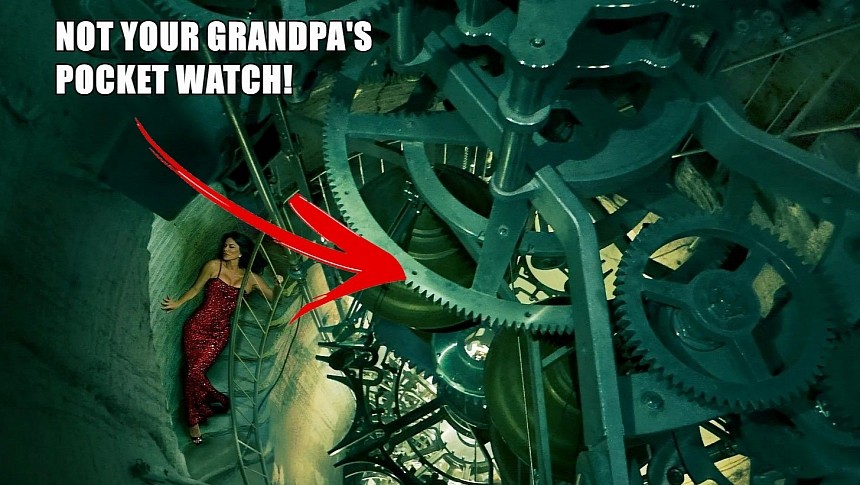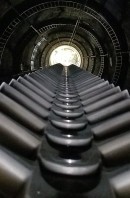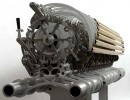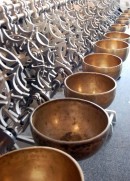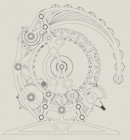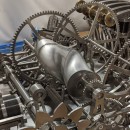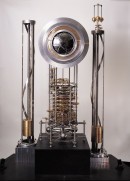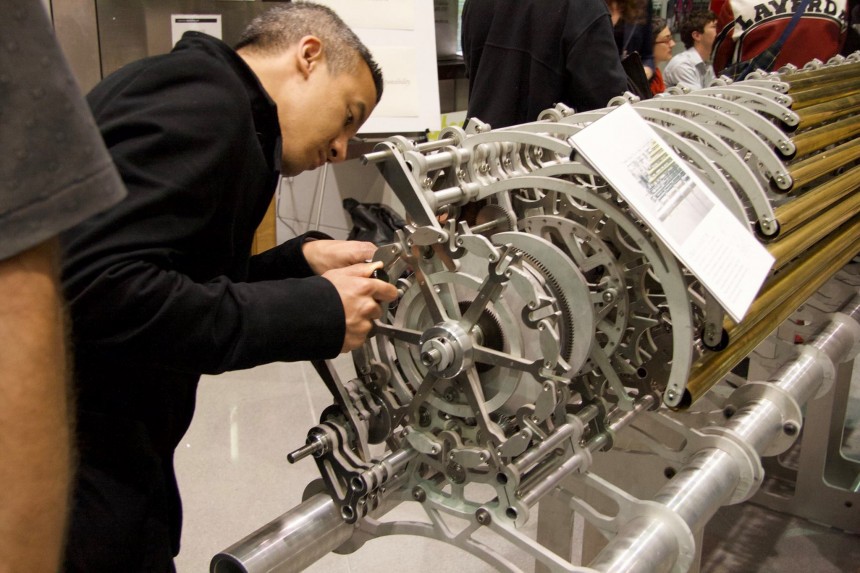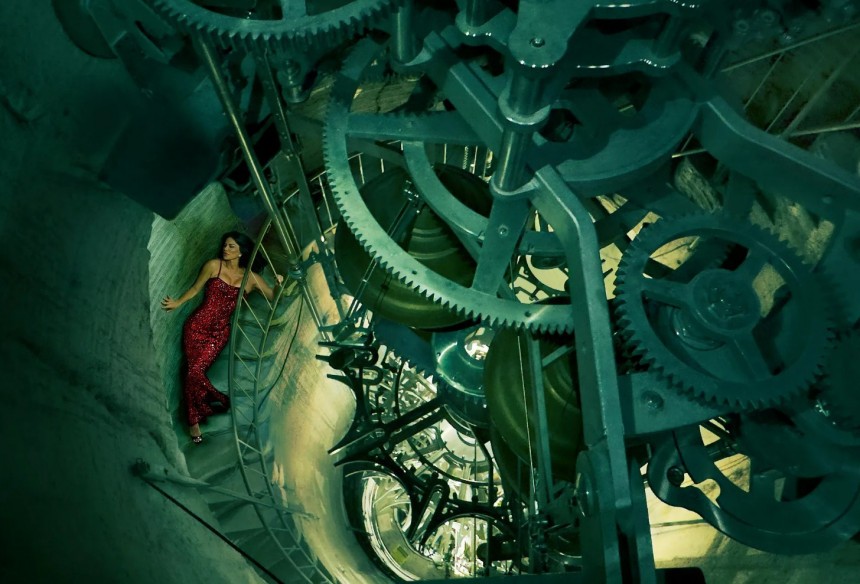It's time. It could be that it's lunch-hour time, or time to call it a day and head back home to your family and your life outside of work. It's time we started acting more considerately towards our planet before it's too late, as we've been told a lot by frantic environmentalists in recent years. It's time to think about the future.
Or maybe it's time to think about… time. If you're as rich as centibillionaire Jeff Bezos (you wish!), you most definitely can do just that: decide it's time to think about time and embark on the most ambitious, expensive, and large-scale timekeeping project of modern times. Bezos calls it the 10,000-Year Clock, but it goes by many names.
In reality, its official name is The Clock of the Long Now. It's a gigantic piece of mechanical timekeeping hidden deep inside a Nevada mountain, ticking once every year and chiming every millennium. Its mission is simple, in that deceiving way in which all great ideas are "simple:" to remind us of the past we'd like to forget and to usher in the future we imagined wouldn't come.
It aims to encourage long-term thinking by turning into a deliberate icon of our civilization – much in the way that photos from space made us realize the importance of more sustainable behaviors with reduced carbon footprints.
The Clock of the Long Now is an art installation with potential benefit for the entire mankind, according to the Long Now Foundation, which was set up to build it. If you're of a more skeptical inclination, such a timepiece is flattery for, by, and of the ultrarich. Bezos included.
By 1995, Hillis had fine-tuned the idea: such a clock, ticking every year and chiming every thousand of years, would be humanity's way of looking back to the past and ahead into the future, learning from the former and adapting behaviors for the latter. It would be the missing piece of the jigsaw puzzle, making us see not just the present but our belonging to the Long Now.
In 1996 (or 01996, as it would read on the Clock), Hillis founded the Long Now foundation together with Silicon Valley fellow enthusiasts, which, in this case, meant techno-optimists with enough cash to burn on artsy pretentiousness. Three years later, the first prototype was unveiled, displaying the characteristics of the piece that would, at least in theory, keep time for the next 10,000 years.
As of the time of writing, three such prototypes exist: the original one is at the Science Museum in London, while two more are located at The Long Now Museum and Store in San Francisco. The prototype count doesn't include the model on Jeff Bezos' Texas ranch, which is often identified as the original Long Now – an understandable error since construction on that one has just broken ground.
Whatever the challenge was, Hillis was up for it. The Clock of the Long Now was designed based on the principles of longevity, maintainability, transparency, evolvability, and scalability. In short, it was designed as a piece that lasts for as long as it should, remains accurate and easily understandable, can be improved and repaired without stopping it, and is safeguarded against external factors, whether the elements or humans looking for an easy buck.
In essence, it's a mechanical clock that requires human winding by a falling weight design with a solar synchronizer. It will continue to keep time even without winding, it just won't tell it. Instead of traditional gears, it uses binary digital logic that allows for some adjustments and helps keep elapsed time, like a stopwatch.
To build the watch, only long-lasting materials with no appeal to potential raiders will be used, like titanium, ceramics, quartz, sapphire, and stainless steel. The fact that the heart of the clock itself will be buried some 500 feet (152 meters) deep into the mountain and that access will be done by means of separate chambers sealed off by metal doors will help keep those raiders disinterested.
The Clock of the Long Now will be located on Foundation land in Nevada. Bezos' is at his ranch in Texas, which also holds the Blue Origin spaceport and is now heavily under construction. The completion of this project will inform the final design of the Long Now, so we're technically looking at two different projects rather than a single one and its prototype.
Bezos has spent a reported $42 million on the project so far, so you understand why he might be itching to show it off. It's been turned into a prop for Lauren Sanchez's December Vogue spread, with her taking the reporter down the steps carved into stone, looking down at the giant gears that make up the complicated mechanism.
"It represents thinking about the future," Sanchez tells the interviewer before adding that it would also make for an awesome location for a Halloween party. But reducing it to a novel party venue would be doing it an injustice: the magnitude of the project can be appreciated when you hear that drilling the shaft alone took more than a year or that diamond-cutting robots needed two years to carve the steps into stone.
Neither this clock nor the Nevada one that will follow it has a completion date because, put simply, something like this has never been done before.
"The whole point of the clock is after a few hundred years, like all old things, it will take on a certain kind of respect," Bezos explains.
That's a very simple way of summing up Hillis' dream clock, but it's also the most relevant. Whatever aspirations Hillis attached to this feat of underground engineering, at the end of the day, the Clock of the Long Now remains a rich boy's toy. A very complex, awe-inspiring, astounding piece of engineering, but a rich boy's toy masquerading as art with value for the whole of mankind.
In reality, its official name is The Clock of the Long Now. It's a gigantic piece of mechanical timekeeping hidden deep inside a Nevada mountain, ticking once every year and chiming every millennium. Its mission is simple, in that deceiving way in which all great ideas are "simple:" to remind us of the past we'd like to forget and to usher in the future we imagined wouldn't come.
It aims to encourage long-term thinking by turning into a deliberate icon of our civilization – much in the way that photos from space made us realize the importance of more sustainable behaviors with reduced carbon footprints.
Danny Hillis' clock of 10,000 years
The idea for such a timekeeping piece goes back to 1986. It's the brainchild of inventor, scientist, and computer designer Danny Hillis, who thought it would be a way of creating a universal feeling of belonging to the passage of time, as arbitrarily as we might keep it.By 1995, Hillis had fine-tuned the idea: such a clock, ticking every year and chiming every thousand of years, would be humanity's way of looking back to the past and ahead into the future, learning from the former and adapting behaviors for the latter. It would be the missing piece of the jigsaw puzzle, making us see not just the present but our belonging to the Long Now.
In 1996 (or 01996, as it would read on the Clock), Hillis founded the Long Now foundation together with Silicon Valley fellow enthusiasts, which, in this case, meant techno-optimists with enough cash to burn on artsy pretentiousness. Three years later, the first prototype was unveiled, displaying the characteristics of the piece that would, at least in theory, keep time for the next 10,000 years.
Easier said than done
It's easy to ponder philosophically on the passage of time and our relevance in the grander scheme of things. It's perhaps not exactly very complicated to fantasize about a clock that could do a bit more than just keep time but remain legible and reliable for the next 10,000 years and, in a way, defeat time while also keeping it.Whatever the challenge was, Hillis was up for it. The Clock of the Long Now was designed based on the principles of longevity, maintainability, transparency, evolvability, and scalability. In short, it was designed as a piece that lasts for as long as it should, remains accurate and easily understandable, can be improved and repaired without stopping it, and is safeguarded against external factors, whether the elements or humans looking for an easy buck.
To build the watch, only long-lasting materials with no appeal to potential raiders will be used, like titanium, ceramics, quartz, sapphire, and stainless steel. The fact that the heart of the clock itself will be buried some 500 feet (152 meters) deep into the mountain and that access will be done by means of separate chambers sealed off by metal doors will help keep those raiders disinterested.
The Clock of the Long Now will be located on Foundation land in Nevada. Bezos' is at his ranch in Texas, which also holds the Blue Origin spaceport and is now heavily under construction. The completion of this project will inform the final design of the Long Now, so we're technically looking at two different projects rather than a single one and its prototype.
Bezos' mountain clock is the ultimate "rich boy toy"
If this was a competition among millionaires, Jeff Bezos would win it. Whereas others collect diamond watches or limited-edition, vintage timepieces, this "space cowboy" is having the world's most complex timepiece built inside a mountain in his own backyard."It represents thinking about the future," Sanchez tells the interviewer before adding that it would also make for an awesome location for a Halloween party. But reducing it to a novel party venue would be doing it an injustice: the magnitude of the project can be appreciated when you hear that drilling the shaft alone took more than a year or that diamond-cutting robots needed two years to carve the steps into stone.
Neither this clock nor the Nevada one that will follow it has a completion date because, put simply, something like this has never been done before.
"The whole point of the clock is after a few hundred years, like all old things, it will take on a certain kind of respect," Bezos explains.
That's a very simple way of summing up Hillis' dream clock, but it's also the most relevant. Whatever aspirations Hillis attached to this feat of underground engineering, at the end of the day, the Clock of the Long Now remains a rich boy's toy. A very complex, awe-inspiring, astounding piece of engineering, but a rich boy's toy masquerading as art with value for the whole of mankind.
